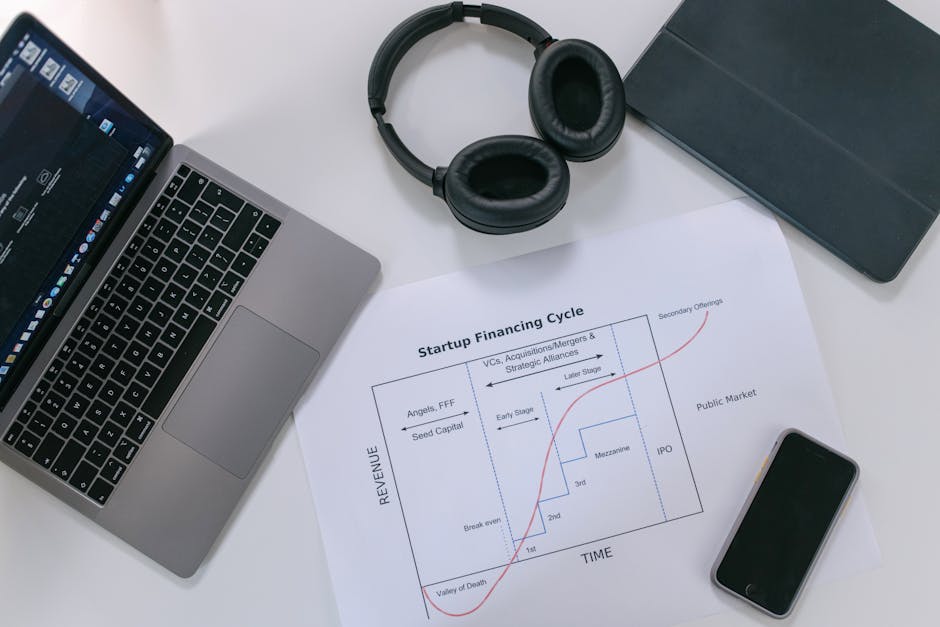Mainframe Modernisation: The Key to Unlocking Business Agility and Innovation
By modernising your mainframe systems, you can tap the full potential of your legacy infrastructure, breaking free from the burdens of technical debt and outdated processes to drive agile innovation and responsiveness in today’s fast-paced digital landscape. Legacy systems contain hidden value, and recognising this can avoid costly rebuilding from scratch. Failing to modernise can lead to a staggering financial burden and hinder your ability to respond to changing market conditions. As you set out on this journey, you’ll discover how to harness the full potential of your modern mainframe architecture to drive business innovation, and empower your organisation to thrive in a rapidly changing world.
Key Takeaways
• Unlocking hidden value in legacy systems can avoid costly rebuilding and rejuvenate functional code, processes, and institutional knowledge.• Agile development and cloud-native migration accelerate delivery of new business capabilities, integrating mainframe modernisation with rapid DevOps enablement.• Advanced analytics and predictive insights from mainframe data drive business innovation, identifying areas of improvement and optimising processes.• Modernising and future-proofing the mainframe involves addressing technical debt, designing open architectures, and embracing evolving technologies.• Harnessing the modern mainframe architecture unlocks business innovation, responding rapidly to changing market conditions and customer needs with agility and scalability.
Unlocking Value in Legacy Systems

As you navigate the complexities of legacy systems, you’re likely to uncover hidden value in the form of functional code, tried-and-true processes, and hard-won institutional knowledge waiting to be repurposed and rejuvenated.
This treasure trove of legacy assets can be the foundation for your Legacy Revival, breathing new life into outdated systems and liberating them from the constraints of the past.
By recognising the value in these existing components, you can avoid the costly and time-consuming process of rebuilding from scratch.
A System Reboot can be a powerful catalyst for transformation, allowing you to reinvigorate your legacy systems and tap their full potential.
By re-examining and re-engineering these systems, you can create a more agile, efficient, and responsive infrastructure that supports your organisation’s evolving needs.
This process not only preserves the investment in your legacy systems but also sets the stage for future innovation and growth.
The Cost of Mainframe Inertia

Failing to modernise your mainframe can lead to a staggering financial burden, with the cumulative cost of maintaining outdated systems, redundant processes, and inefficient resource allocation quietly draining your organisation’s resources.
As you continue to rely on legacy systems, you’re perpetuating a cycle of inefficiency, where resources are wasted on maintaining the status quo rather than driving innovation.
This phenomenon is often referred to as Mainframe Entropy, where the complexity and decay of your mainframe environment lead to increased costs, reduced agility, and decreased competitiveness.
The Legacy Burden of maintaining outdated systems weighs heavily on your organisation, hindering your ability to respond to changing market conditions and customer needs.
As you struggle to keep pace with the competition, you’re likely pouring resources into short-term fixes rather than strategic investments.
This reactive approach only serves to exacerbate the problem, further intrenching your organisation in a cycle of inefficiency.
By failing to modernise, you’re not only incurring unnecessary costs but also stifling innovation and hindering your ability to adapt to changing market conditions.
It’s time to take a step back and assess the true cost of mainframe inertia.
Agile Development for Mainframes

As you modernise your mainframe, you’ll need to adopt agile development practises to stay competitive.
By embracing agile methodologies, you’ll be able to rapidly respond to changing business needs and deliver value faster.
To achieve this, you’ll want to focus on rapid DevOps enablement, agile method adoption, and continuous integration to streamline your development pipeline.
Rapid DevOps Enablement
By integrating Agile development principles into mainframe modernisation, you can accelerate the delivery of new business capabilities and substantially reduce time-to-market.
This is achieved through rapid DevOps enablement, which streamlines the development, testing, and deployment of mainframe applications.
By leveraging DevOps pipelines, you can automate the build, test, and deployment processes, reducing manual errors and increasing the speed of delivery.
To take it a step further, you can implement automation frameworks that orchestrate the entire software development lifecycle.
This enables continuous integration and continuous delivery, allowing your teams to focus on developing new features and capabilities rather than getting bogged down in manual processes.
With automation, you can also certify compliance with regulatory requirements and reduce the risk of errors, freeing up resources to focus on innovation and growth.
Agile Method Adoption
You can substantially enhance mainframe development agility by adopting Agile methodologies, which facilitate iterative and incremental development, and enable your teams to respond swiftly to changing business requirements.
By embracing Agile, you can break free from traditional waterfall approaches and foster a culture of collaboration and continuous improvement.
Consider forming Scrum Teams, which can facilitate regular sprints, daily stand-ups, and retrospectives to confirm your teams are alined and working towards common goals.
Alternatively, you can adopt a Kanban Flow approach, which visualises workflows, limits work in progress, and emphasises continuous delivery.
Whichever Agile framework you choose, prioritise flexibility, adaptability, and rapid response to changing business needs.
By doing so, you’ll be better equipped to drive innovation, reduce time-to-market, and stay ahead of the competition.
As you set out on this Agile journey, remember to emphasise team empowerment, continuous learning, and a relentless focus on delivering value to your customers.
Continuous Integration
To accelerate mainframe development and reduce errors, integrate continuous integration (CI) into your Agile workflow, automating builds, tests, and deployments to facilitate timely and high-quality deliveries.
By doing so, you’ll verify that every code change is thoroughly tested, validated, and reviewed before it reaches production. This approach enables your team to identify and fix defects early on, improving code quality and reducing the likelihood of downstream problems.
As you implement CI, focus on optimising your pipeline efficiency.
This involves streamlining your build, test, and deployment processes to minimise wait times and maximise productivity. By automating repetitive tasks and eliminating bottlenecks, you’ll be able to deliver new features and updates at an unprecedented pace.
With CI, you’ll gain real-time insights into your codebase, enabling data-driven decision-making and continuous improvement.
Cloud-Native Mainframe Migration

Leveraging cloud-native principles, organisations can now reimagine their mainframe legacy systems as scalable, agile, and highly resilient cloud-based architectures.
By migrating to the cloud, you can break free from the constraints of traditional mainframe systems and tap into new levels of business agility and innovation.
Cloud-native mainframe migration involves re-architecting your mainframe applications and data to take advantage of cloud-based services and technologies.
This approach enables you to harness the scalability, flexibility, and cost-effectiveness of the cloud, while minimising the risks associated with legacy systems.
As you set out on this journey, prioritising cloud security and data sovereignty is crucial.
You need to make certain that your cloud-based mainframe architecture is designed with security in mind, using robust encryption, access controls, and monitoring capabilities to protect sensitive data.
Additionally, you must also consider data sovereignty requirements, verifying that your cloud-based mainframe systems comply with relevant regulations and standards.
Advanced Analytics for Mainframe Data

By tapping the potential of advanced analytics, organisations can now extract valuable insights from their mainframe data, uncovering hidden patterns, trends, and correlations that drive business innovation and competitive advantage.
You can harness the full potential of your mainframe data by applying advanced analytics techniques, such as machine learning and predictive modelling. This enables you to identify areas of improvement, optimise processes, and create new revenue streams.
One key benefit of advanced analytics is its ability to provide predictive insights, allowing you to anticipate and respond to changing market conditions, customer needs, and operational risks. You can develop predictive models that identify potential issues before they occur, enabling proactive decision-making and minimising the risk of disruption.
Data visualisation plays a critical role in advanced analytics, as it enables you to present complex data insights in a clear, intuitive, and actionable way. By visualising your mainframe data, you can identify trends, patterns, and correlations that would be difficult to discern through traditional reporting methods. This enables you to make data-driven decisions, drive innovation, and stay ahead of the competition.
Breaking Free From Technical Debt

As you navigate the complexities of mainframe modernisation, outdated systems and legacy code can weigh you down with technical debt, hindering your ability to innovate and respond to changing business needs.
Technical debt can manifest in various ways, such as poor code quality, duplicated code, and complex integrations.
Addressing these issues is crucial to break free from the constraints of legacy systems and tap the full potential of your mainframe.
To tackle technical debt, you need to measure and track debt metrics.
This involves evaluating the quality of your code, identifying areas of duplication, and evaluating the complexity of your systems.
By doing so, you can pinpoint areas that require refactoring, simplification, or even replacement.
This process allows you to prioritise your modernisation efforts, focussing on the most critical areas that will have the greatest impact on your business.
The Rise of Modern Mainframe Architecture

With a solid understanding of technical debt, you can now shift your focus to designing a modern mainframe architecture that supports agility, scalability, and innovation. This modern architecture is critical to tapping the full potential of your mainframe, enabling you to respond quickly to changing business needs and stay ahead of the competition.
A modern mainframe architecture should be built on the principles of openness, flexibility, and integration.
A modern mainframe architecture has 4 key characteristics:
Open Systems: Leverage open standards and interfaces to facilitate seamless integration with other systems and technologies.
Hybrid Integration: Combine the strengths of mainframe and distributed systems to create a hybrid environment that supports both legacy and modern workloads.
Modular Design: Break down monolithic systems into smaller, independent modules that can be easily updated, replaced, or scaled as needed.
API-First Approach: Expose mainframe functionality through APIs, enabling rapid development and integration of new applications and services.
Unleashing Business Innovation Potential

You can now harness the full potential of your modern mainframe architecture to drive business innovation, leveraging its agility, scalability, and integration capabilities to rapidly respond to changing market conditions and customer needs.
This enables you to create a culture of innovation within your organisation, where ideas can flourish and creativity can thrive. By fostering an innovation culture, you can empower your teams to experiment, take calculated risks, and develop novel solutions that drive business growth.
As a digital leader, you recognise the importance of leveraging technology to drive business outcomes. With a modern mainframe at the core of your IT infrastructure, you can tap new revenue streams, improve customer experiences, and gain a competitive edge in the market.
By integrating your mainframe with cloud, mobile, and IoT systems, you can create a seamless, omnichannel experience that delights customers and drives loyalty.
To tap the full potential of your modern mainframe, you need to adopt a digital leadership mindset that encourages experimentation, collaboration, and continuous learning.
This means embracing DevOps practises, agile methodologies, and design thinking to drive innovation and speed. By doing so, you can create a culture of innovation that permeates every aspect of your organisation, driving growth, profitability, and sustainability.
Future-Proofing Your Mainframe Strategy

To guaranty your mainframe remains a strategic asset, not a legacy liability, it’s vital to future-proof your strategy by embracing evolving technologies, adapting to shifting market demands, and building flexibility into your infrastructure.
This requires a deliberate approach to modernising your mainframe, rather than simply maintaining the status quo.
Four key considerations to future-proof your mainframe strategy:
Mainframe ResilienceProtect your mainframe from disruptions, whether caused by cyber threats, hardware failures, or other incidents, and guaranty its ability to recover quickly.
Cloud-Native IntegrationLeverage cloud-native services to augment your mainframe capabilities, enabling greater agility and scalability.
API-First DevelopmentAdopt an API-first approach to mainframe development, enabling seamless integration with external systems and fostering innovation.
Strategy RefreshRegularly reassess and refresh your mainframe strategy to stay alined with evolving business needs and technological advancements.
Conclusion
You’re now poised to harness the full potential of your mainframe, breaking free from the shackles of legacy systems.
Did you know that for every dollar spent on mainframe maintenance, only 10 cents is invested in innovation?
It’s time to flip that script. By modernising your mainframe, you’ll be able to redirect resources towards driving business agility and innovation, staying ahead of the curve in today’s fast-paced digital landscape.
Contact us to discuss our services now!
